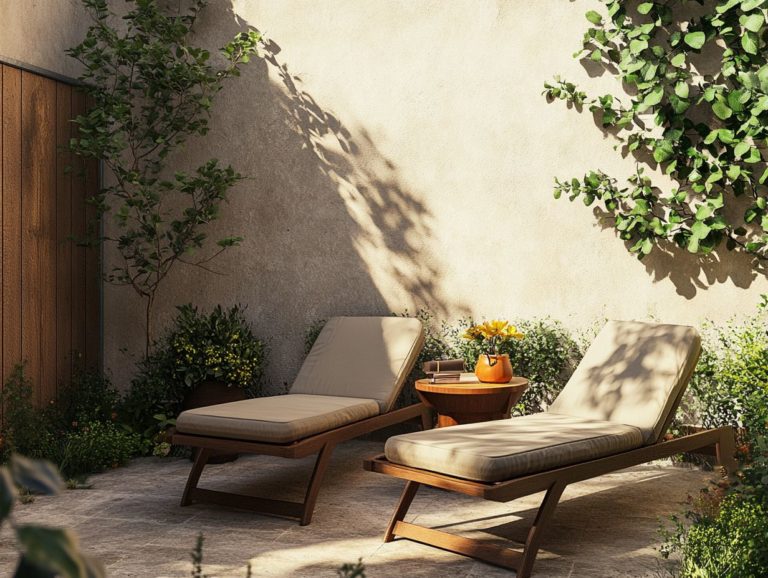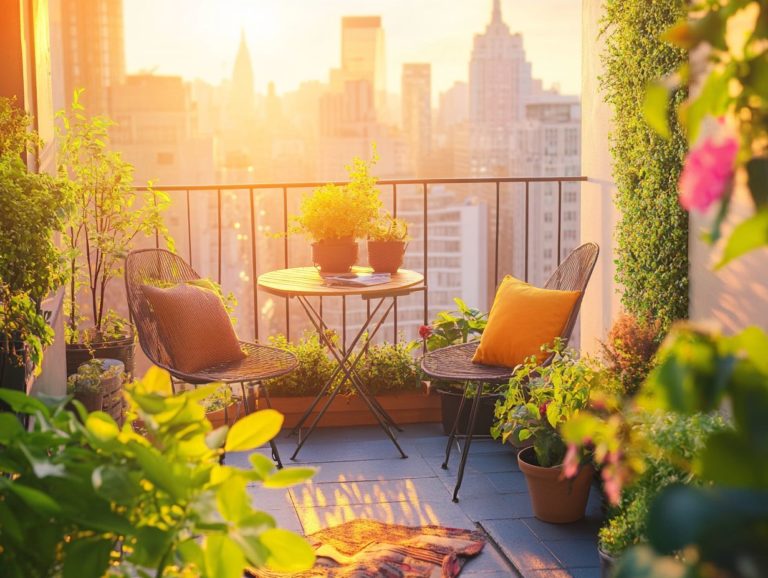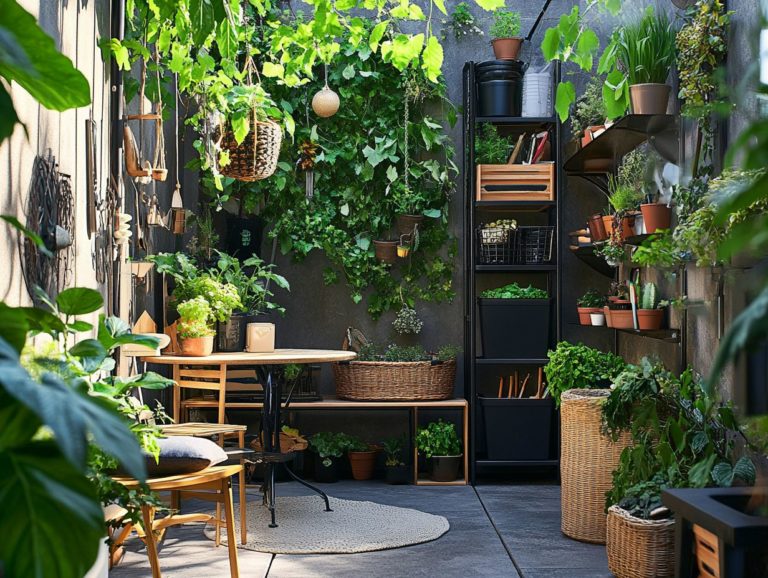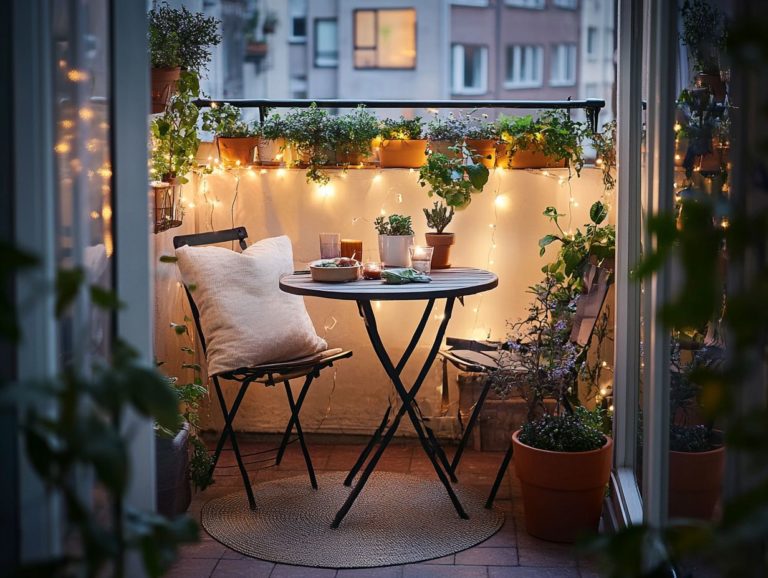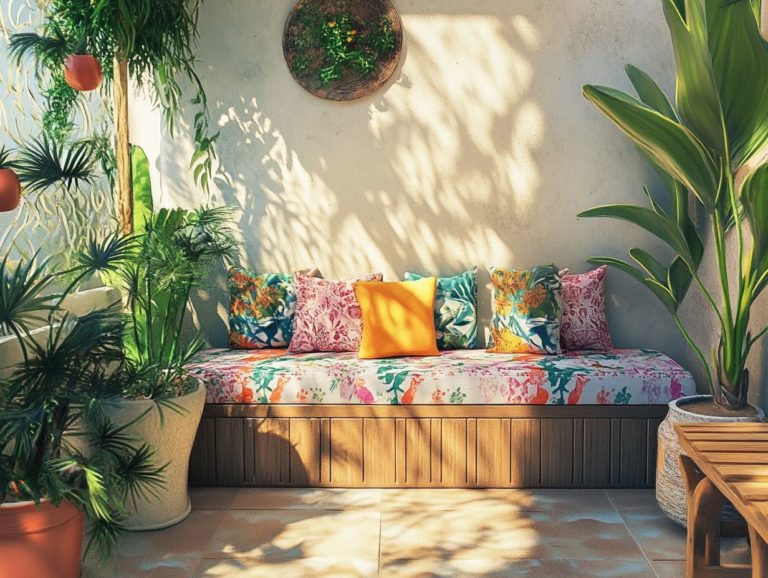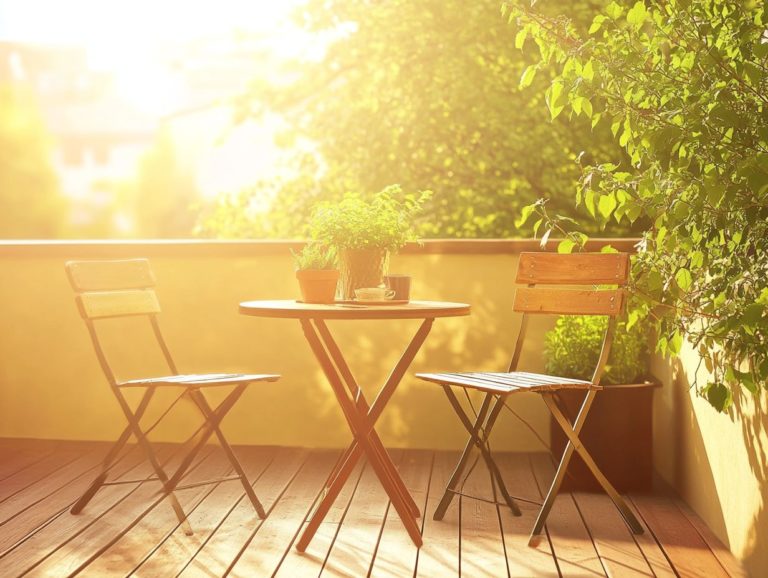How to Choose the Right Materials for Outdoor Furniture
Choosing the right materials for your outdoor furniture is key to creating a stylish oasis. Let s explore how the right choices can transform your space!
You’ll need to consider several factors, from climate conditions to your aesthetic preferences. This article delves into various materials such as wood, metal, plastic, and wicker, shedding light on their distinct benefits and drawbacks.
This article also provides insights on mixing materials for a harmonious look and shares care tips to keep your furniture in top shape.
Prepare to elevate your outdoor oasis!
Contents
- Key Takeaways:
- Factors to Consider When Choosing Outdoor Furniture Materials
- Popular Materials for Outdoor Furniture
- Mixing and Matching Materials
- Caring for Outdoor Furniture
- Frequently Asked Questions
- What are the most durable materials for outdoor furniture?
- What should I consider when choosing materials for outdoor furniture?
- Which materials are best for hot and humid climates?
- Are there any eco-friendly options for outdoor furniture materials?
- Can I mix and match materials for my outdoor furniture?
- How much maintenance do different materials for outdoor furniture require?
Key Takeaways:
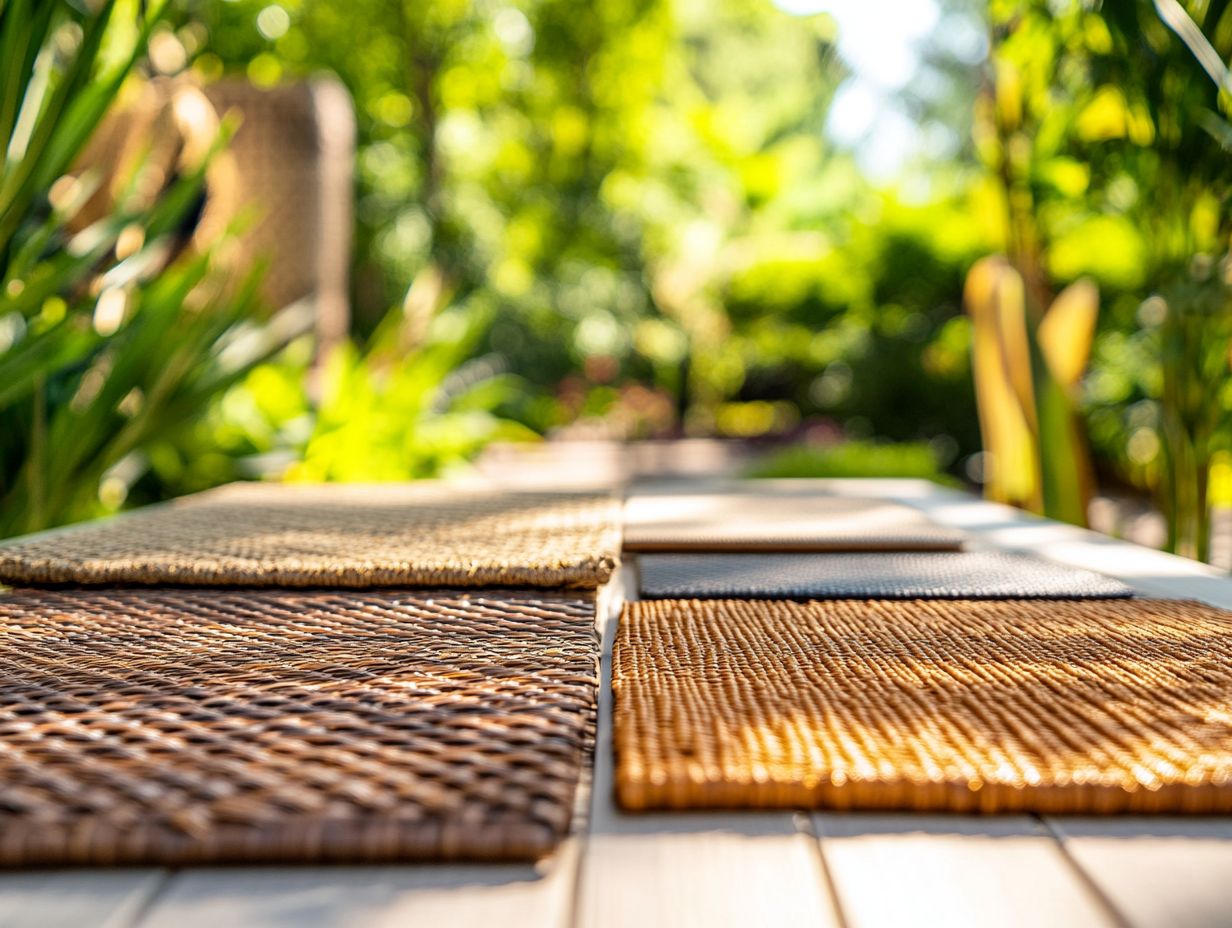
- Pick materials that can handle your local weather to keep your outdoor furniture looking great!
- Think about how much time you’re willing to spend on maintenance. Some materials need more care than others!
- Choose styles that reflect your personality. Your outdoor space should be a true extension of you!
Factors to Consider When Choosing Outdoor Furniture Materials
When selecting outdoor furniture materials, it s essential for you to consider factors like water resistance, weather resilience, and durability particularly if you re investing in a patio furniture set that elevates your outdoor living space.
Choosing the right materials can greatly enhance your comfort, elevate the aesthetic appeal, and extend the longevity of your pieces, all while ensuring that your choices align with both your budget and eco-friendly aspirations.
Climate and Weather Resistance
Understanding the climate and weather conditions is essential when selecting outdoor furniture, as these factors directly influence the material’s weather resistance, such as water resistance and the ability to resist mildew (a type of fungus that thrives in damp conditions) and mold.
Consider the varying levels of moisture and UV exposure in your region; these should be key considerations in your selection process. For instance, if you live in a coastal area with high humidity, you’ll want materials that can withstand rot and corrosion. Teak is a fantastic choice here, thanks to its natural oils that offer impressive water resistance.
If you’re in a sunny climate where UV rays are relentless, aluminum becomes your go-to option. It’s lightweight, durable, and won’t rust or warp under the sun’s harsh glare.
By carefully choosing materials based on your local weather patterns, you can ensure your outdoor furniture remains not only functional but also stylish, effortlessly weathering the elements while providing comfort and aesthetic appeal for years to come.
Maintenance and Durability
When considering outdoor furniture, maintenance is an essential aspect that influences both durability and your overall enjoyment of the space.
Understanding the specific requirements of materials like rattan, teak, and aluminum can greatly enhance their longevity. For example, rattan pieces necessitate regular cleaning and protective coatings to shield against moisture, whereas teak, with its natural resistance to the elements, thrives on periodic oil treatments to preserve its rich hue.
Aluminum furniture is a breeze to care for, requiring just the occasional wipe-down to eliminate dirt and grime.
Delving into options for outdoor upholstery such as fade-resistant and water-repellent fabrics alongside finishes that guard against UV rays and stains, will further ensure that your outdoor pieces remain both inviting and functional throughout the changing seasons.
Start selecting your materials today and create the outdoor space of your dreams!
Style and Aesthetic
The style and aesthetic of your outdoor furniture play a crucial role in enhancing the overall appeal of your outdoor living space. This ensures comfort levels that invite relaxation and social gatherings.
By blending contemporary designs with sleek lines and vibrant colors alongside traditional pieces made from rustic wood or wrought iron, you can create a balance that fits any outdoor setting. Imagine how a modern sectional can seamlessly work with a classic dining set, transforming an ordinary patio into a stunning venue for al fresco dining or casual lounging.
Your choice of materials, whether it s wicker that can withstand rain and sun or plush cushions, shapes the visual appeal and enhances durability. This selection guarantees a lasting investment in outdoor aesthetics, fostering an inviting atmosphere for both family and guests.
Popular Materials for Outdoor Furniture
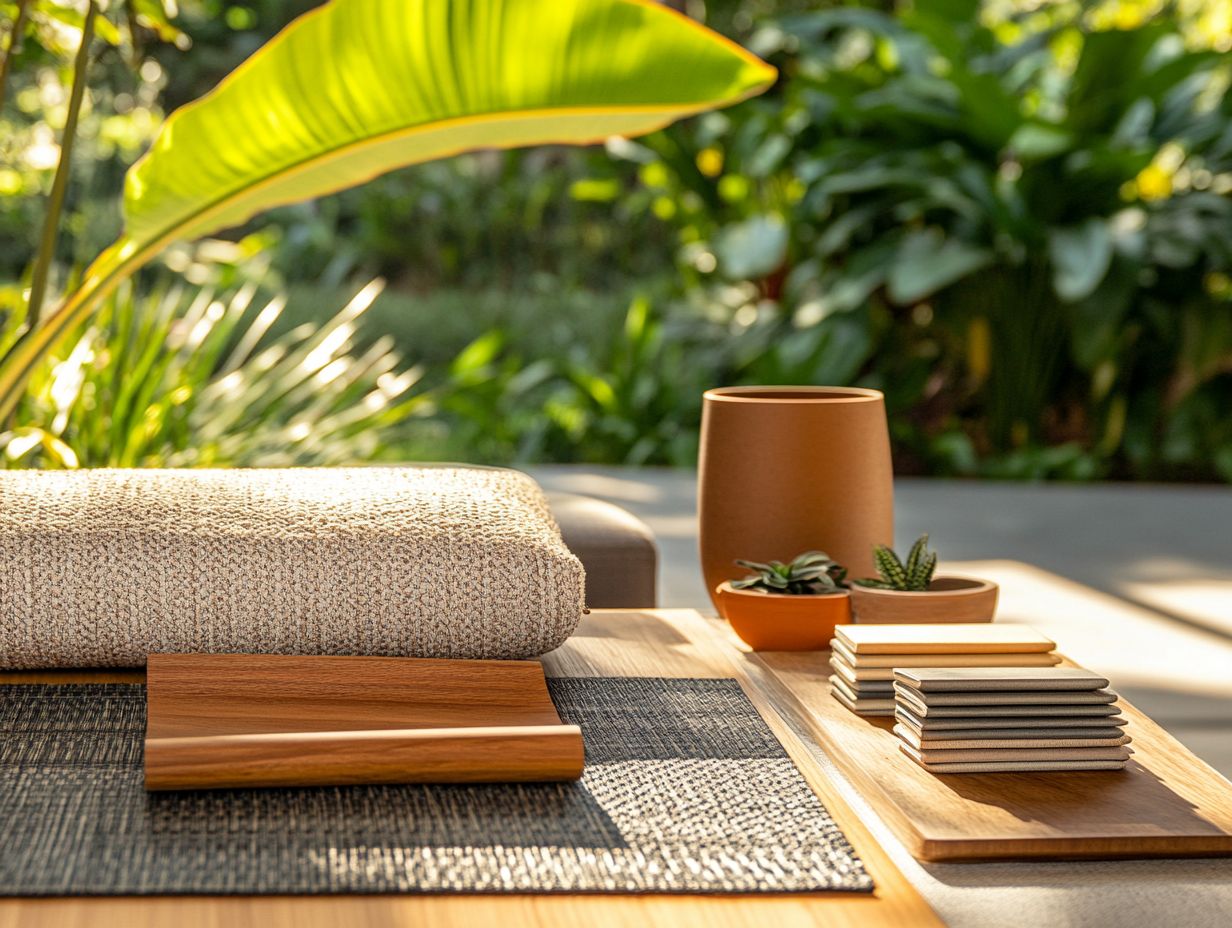
When choosing outdoor furniture, such as wooden, plastic, or metal options, several popular materials stand out for their exceptional qualities. It’s important to ask yourself, what should I consider when buying outdoor furniture?
- Teak furniture is renowned for its remarkable durability and long-lasting performance.
- Aluminum furniture is favored for being lightweight, making it easy to rearrange your space.
- Wrought iron exudes timeless elegance, adding a classic touch to your outdoor setting.
Wood
Wood, especially teak, is a premium choice for outdoor furniture because of its natural beauty, durability, and resistance to the elements. Wrought iron offers a classic alternative.
This timeless material elevates the aesthetic appeal of your patios and gardens, providing a level of comfort that synthetic alternatives often struggle to match. Varieties like eucalyptus, mahogany, and cedar each bring unique characteristics, catering to your personal tastes.
While these woods can endure outdoor conditions reasonably well, they require regular maintenance think oiling and sealing to keep them looking their best. On the flip side, wood can warp, crack, and suffer insect damage if not cared for properly. It’s crucial to understand the best practices for ensuring its longevity.
Metal
Metal materials like aluminum and wrought iron have become increasingly popular for outdoor furniture thanks to their durability and weather resistance. They are perfect for various outdoor settings.
These materials endure harsh climates and offer a wide array of aesthetic options that can elevate your garden or patio’s look. Aluminum is lightweight, allowing for easy rearrangement and transport, while wrought iron brings sturdy, timeless charm with intricate design possibilities.
When it comes to rust resistance, aluminum naturally fights off corrosion, ensuring it retains its vibrant appearance and functionality for years. Wrought iron, although heavier, requires a protective coating to withstand the elements while offering undeniable classic elegance.
By understanding these features, you can make informed choices that beautifully complement your outdoor spaces.
Plastic
Plastic furniture has surged in popularity for outdoor use due to its affordability, diverse styles, and eco-friendly options made from recycled materials.
This furniture is incredibly durable, often faring better against harsh weather than wood or metal, which can warp or rust. While the benefits are compelling, it’s important to weigh potential drawbacks like fading under intense sunlight and the risk of scratches.
Recent advancements in synthetic materials have produced options that emulate the appearance of traditional wood while enhancing comfort with ergonomic designs. When you compare plastic alternatives to aluminum or natural wood, you ll find a striking balance between aesthetics, practical maintenance, and long-term performance. This makes plastic furniture an increasingly attractive choice for discerning consumers.
Invest in outdoor furniture today to enjoy your space all year round!
Wicker
Wicker furniture, especially when crafted from rattan or synthetic materials, combines sophistication with weather resistance. This makes it an ideal choice for your outdoor spaces.
The intricate weaving patterns elevate its visual appeal while providing a unique texture that encourages relaxation. If you want versatile outdoor decor, consider wicker. It has a timeless charm that complements various design styles.
By opting for natural rattan, you embrace warmth and organic beauty while appreciating its eco-friendliness. Synthetic wicker is very durable and requires minimal maintenance.
This option stands resilient against the elements, resisting fading and wear over time. It ensures that your furniture remains a long-lasting fixture in your outdoor environment. Whether you choose natural materials or synthetic alternatives, wicker furniture delivers both style and practicality.
Mixing and Matching Materials
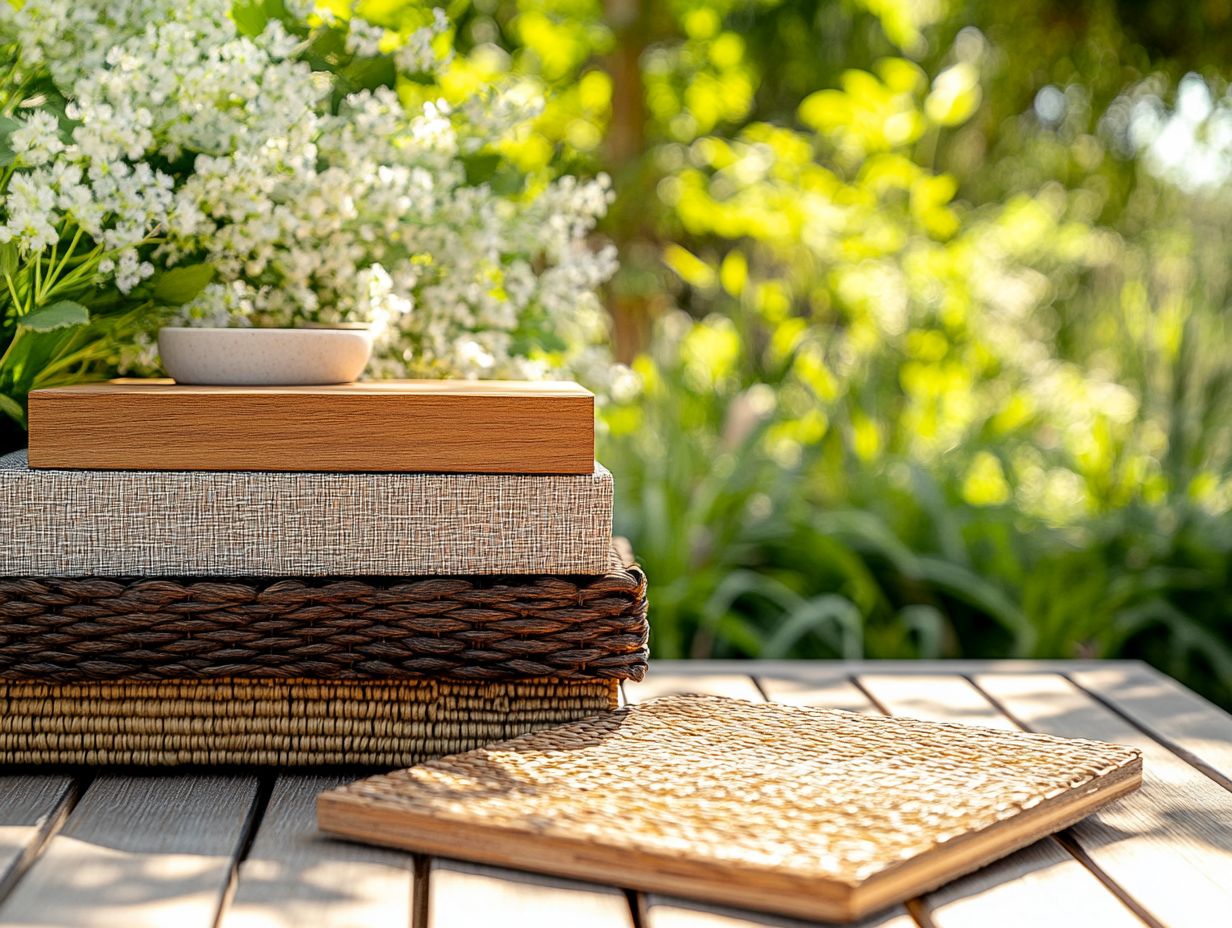
Mixing and matching materials in your outdoor furniture cultivates a cohesive aesthetic and elevates both comfort and functionality in your outdoor living space.
By thoughtfully combining different textures and finishes, you can transform your area into a haven of relaxed elegance.
Creating a Cohesive Look
Achieving a cohesive look when mixing materials in your outdoor furniture requires a keen eye for design basics that prioritize aesthetics and comfort.
You can accomplish this by considering color harmony. Ensure each element complements the others without clashing. Balancing textures like the sleekness of metal against the warmth of wood adds depth to your space. This creates a welcoming atmosphere that invites relaxation.
Keeping a consistent style is key, whether you re leaning toward a modern minimalist vibe or embracing a cozy rustic feel. Selecting materials that complement or intentionally contrast with one another can elevate your overall design, enhancing visual interest while maintaining a cohesive identity throughout your outdoor area.
Caring for Outdoor Furniture
Take care of your outdoor furniture to make it last longer and maintain its aesthetic appeal. It requires tailored maintenance strategies to safeguard against the diverse challenges posed by changing weather conditions.
Tips for Maintaining and Protecting Furniture
Effective maintenance of your outdoor furniture hinges on regular cleaning and protective measures. This ensures both longevity and resilience against the whims of Mother Nature.
To achieve this, establish a cleaning schedule. Aim for a thorough clean each season. Use gentle soap solutions on wood and metal surfaces. For upholstered items, specialized fabric cleaners are your best bet. Employing protective treatments, like sealants for wooden tables and waterproof sprays for cushions, can significantly enhance their lifespan.
It’s also wise to bring in outdoor cushions during extreme weather. Excessive sunlight can fade vibrant colors, and heavy rain might invite mold. Regularly inspect for wear and tear to make timely repairs. This will preserve both the beauty and functionality of your cherished furniture.
Frequently Asked Questions
What are the most durable materials for outdoor furniture?
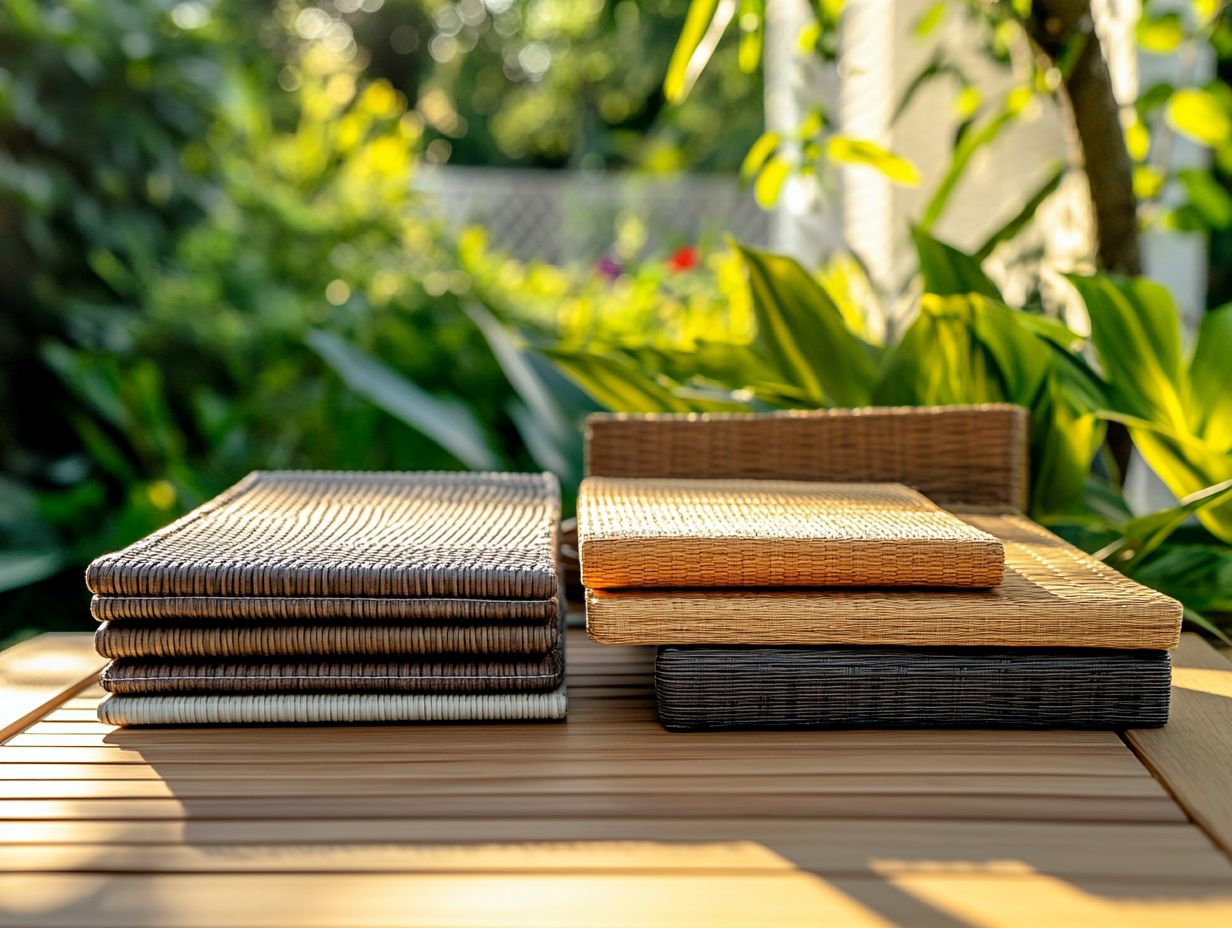
Some of the most durable materials for outdoor furniture include teak, cedar, aluminum, and wrought iron. These materials are known for their resistance to weather elements and longevity.
What should I consider when choosing materials for outdoor furniture?
When choosing materials for outdoor furniture, consider the climate in your area, the level of maintenance required, and the style and design of the furniture. It’s also important to think about your budget and the durability of the materials.
Which materials are best for hot and humid climates?
For hot and humid climates, aluminum, teak, and synthetic wicker are great choices. They resist moisture and won t easily warp or rot.
Are there any eco-friendly options for outdoor furniture materials?
Absolutely! You have fantastic eco-friendly options like recycled plastic, bamboo, and sustainably sourced wood.
These materials are good for the planet and help reduce your environmental impact.
Can I mix and match materials for my outdoor furniture?
Yes, mixing and matching is a fun way to create a unique look for your outdoor space. Just ensure the materials go well together and can handle outdoor conditions.
How much maintenance do different materials for outdoor furniture require?
Maintenance varies by material. Teak and aluminum need little upkeep, while wrought iron and wicker require more frequent cleaning.

